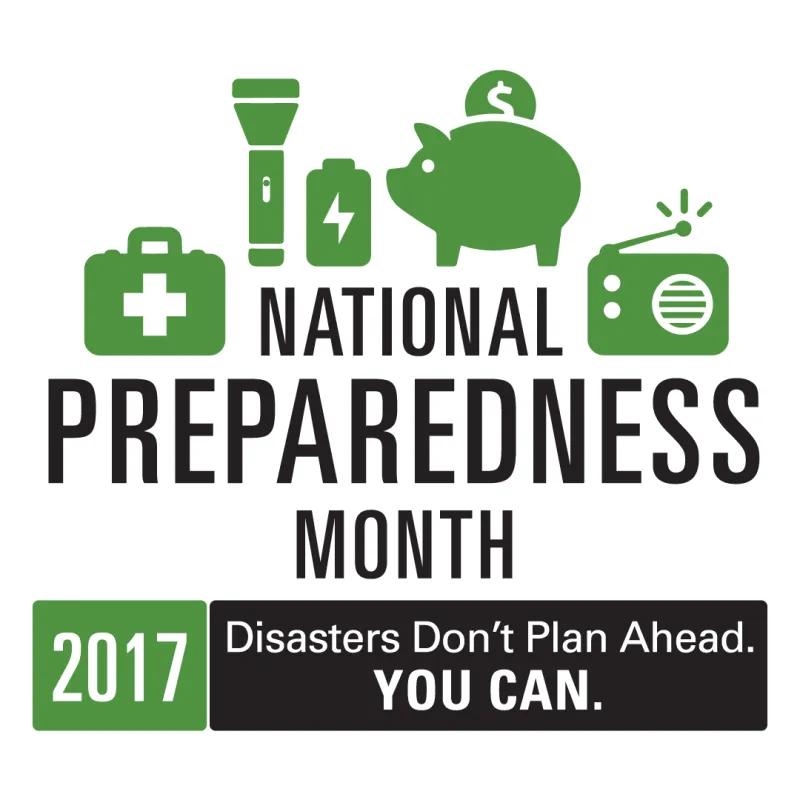September is National Preparedness Month (NPM), an opportunity to encourage Americans to take steps to prepare for emergencies in their homes, businesses, schools, and communities. The theme for this year’s observance is “Disasters Don’t Plan Ahead. You Can.” In addition, NPM is broken down into weekly themes to help keep you and your loved ones prepared:
- Week 1: September 1-9, Make a Plan for Yourself, Family and Friends
- Week 2: September 10-16, Plan to Help Your Neighbor and Community
- Week 3: September 17-23, Practice and Build Out Your Plans
- Week 4: September 24-30, Get Involved! Be a part of Something Larger

This week's theme is, Make a Plan for Yourself, Family and Friends. Your family may not be together if a disaster strikes, so it is important to know which types of disasters could affect your area. Know how you’ll contact one another and reconnect if separated. Establish a family meeting place that’s familiar and easy to find. If you don't already have an emergency plan, use the below tips that can help you and your family reunite if a disaster strikes.
Step 1: You can start to make a plan by discussing these 4 questions with your family, friends, or household.
- How will I receive emergency alerts and warnings?
- What is my shelter plan?
- What is my evacuation route?
- What is my family/household communication plan?
Step 2: Consider specific needs in your household.
As you prepare your plan, tailor your plans and supplies to your specific daily living needs and responsibilities. Create a personal network for specific areas where you need assistance. Discuss your needs and responsibilities and how people in the network can assist each other with communication, care of children, business, pets, or specific needs like the operation of durable medical equipment. Keep in mind some these factors when developing your plan:
- Different ages of members within your household
- Responsibilities for assisting others
- Locations frequented
- Dietary needs
- Medical needs including prescriptions and equipment
- Disabilities or access and functional needs including devices and equipment
- Languages spoken
- Cultural and religious considerations
- Pets or service animals
- Households with school-aged children
Step 3: Fill out a Family Emergency Plan
Download and fill out a family emergency plan or use them as a guide to create your own.
Step 4: Practice your plan with your family/household
This step is simple, make sure you practice your plan with your family/household. Practice makes perfect and can save lives if ever a disaster strikes!
Sign up to receive local alerts and warnings; download the FEMA App which is available in English and Spanish, to receive weather alerts, safety tips and disaster resources. You can also set reminders to take important steps to prepare your home and family for disasters, such as changing your smoke detector batteries and practicing fire escape plans.
Visit Ready.gov/September for more tips and information. Each step we take to become better prepared will make a real difference in how our families and communities will respond and persevere when faced with the unexpected. A prepared people is a prepared nation.
